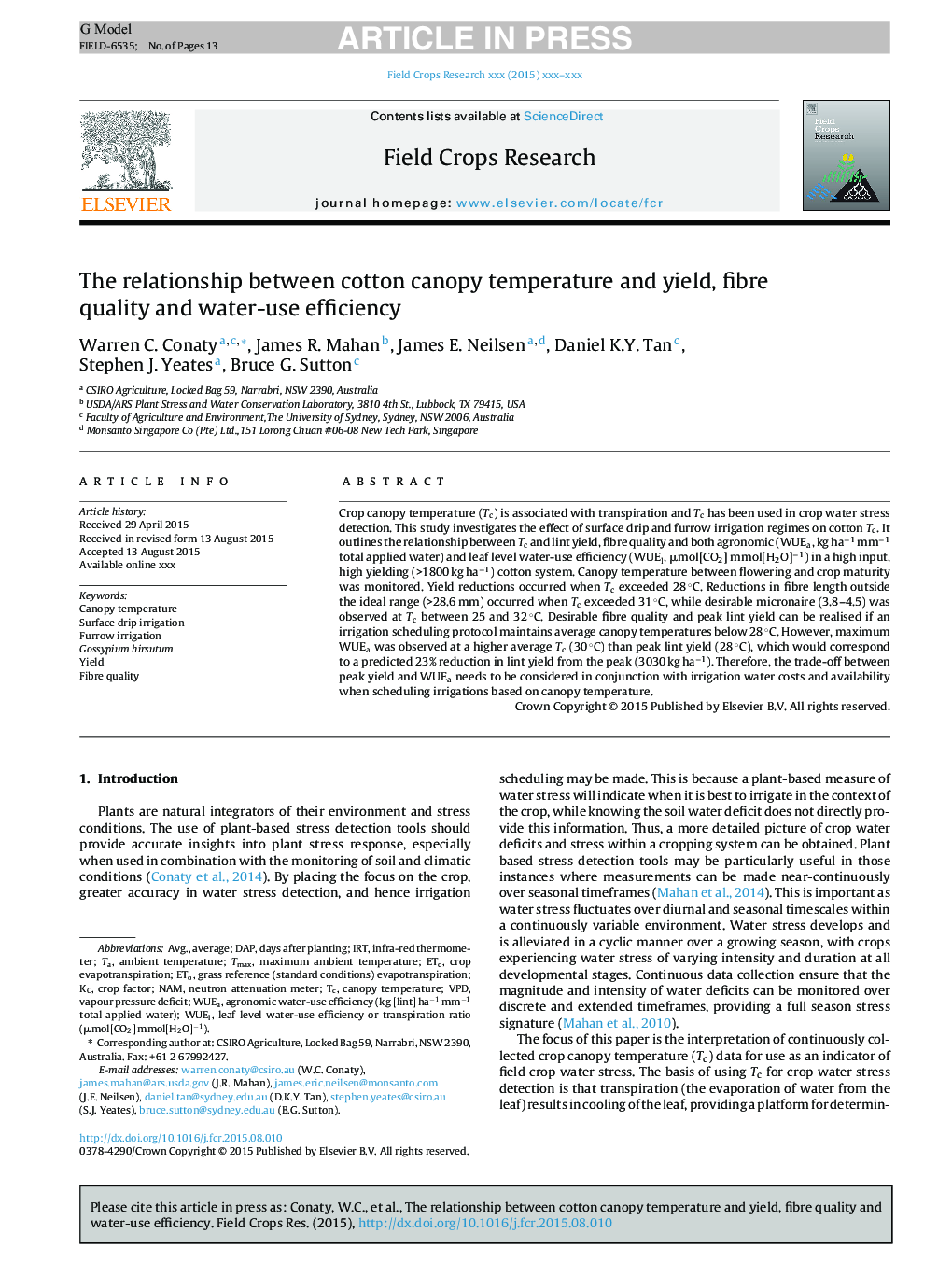| کد مقاله | کد نشریه | سال انتشار | مقاله انگلیسی | نسخه تمام متن |
|---|---|---|---|---|
| 6374710 | 1624680 | 2015 | 13 صفحه PDF | دانلود رایگان |
عنوان انگلیسی مقاله ISI
The relationship between cotton canopy temperature and yield, fibre quality and water-use efficiency
ترجمه فارسی عنوان
رابطه دما و عملکرد بافت پنبه پنبه، کیفیت فیبر و بهره وری استفاده از آب
دانلود مقاله + سفارش ترجمه
دانلود مقاله ISI انگلیسی
رایگان برای ایرانیان
کلمات کلیدی
IRTMaximum ambient temperatureSurface drip irrigationtmaxGossypium hirsutumDAPVPDEToFurrow irrigation - آبیاری فوریYield - بازدهcrop evapotranspiration - تبخیر تعرق محصولCanopy temperature - دمای سایبانAmbient temperature - دمای محیطdays after planting - روز بعد از کاشتaverage - میانگینNAM - نامETc - و غیرهvapour pressure deficit - کسری فشار بخارFibre quality - کیفیت فیبر
موضوعات مرتبط
علوم زیستی و بیوفناوری
علوم کشاورزی و بیولوژیک
علوم زراعت و اصلاح نباتات
چکیده انگلیسی
Crop canopy temperature (Tc) is associated with transpiration and Tc has been used in crop water stress detection. This study investigates the effect of surface drip and furrow irrigation regimes on cotton Tc. It outlines the relationship between Tc and lint yield, fibre quality and both agronomic (WUEa, kg haâ1 mmâ1 total applied water) and leaf level water-use efficiency (WUEl, μmol[CO2] mmol[H2O]â1) in a high input, high yielding (>1800 kg haâ1) cotton system. Canopy temperature between flowering and crop maturity was monitored. Yield reductions occurred when Tc exceeded 28 °C. Reductions in fibre length outside the ideal range (>28.6 mm) occurred when Tc exceeded 31 °C, while desirable micronaire (3.8-4.5) was observed at Tc between 25 and 32 °C. Desirable fibre quality and peak lint yield can be realised if an irrigation scheduling protocol maintains average canopy temperatures below 28 °C. However, maximum WUEa was observed at a higher average Tc (30 °C) than peak lint yield (28 °C), which would correspond to a predicted 23% reduction in lint yield from the peak (3030 kg haâ1). Therefore, the trade-off between peak yield and WUEa needs to be considered in conjunction with irrigation water costs and availability when scheduling irrigations based on canopy temperature.
ناشر
Database: Elsevier - ScienceDirect (ساینس دایرکت)
Journal: Field Crops Research - Volume 183, November 2015, Pages 329-341
Journal: Field Crops Research - Volume 183, November 2015, Pages 329-341
نویسندگان
Warren C. Conaty, James R. Mahan, James E. Neilsen, Daniel K.Y. Tan, Stephen J. Yeates, Bruce G. Sutton,
